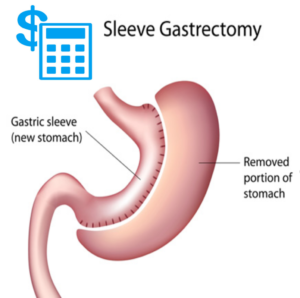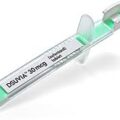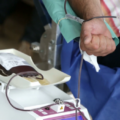What is a gastric sleeve?
Gastric sleeve surgery, also known as sleeve gastrectomy, is a weight loss surgery that has dramatically increased in popularity over recent years. Gastric sleeve is a restrictive procedure where the capacity of your stomach is dramatically reduced by about 75% in order to aid substantial long-term weight loss. As a result, your overall health usually improves too. Gastric sleeve, overall, is considered safe when compared to other commonly performed surgeries. Deaths from the procedure are rare, and when performed by a competent surgeon, the procedure has minimal complications.
How does a gastric sleeve work?
A gastric sleeve works by permanently removing a large portion of your stomach. As the capacity of your stomach is vastly reduced, it can only hold a small portion of food. You will feel full after eating much less food and be less hungry between meals. A sleeve gastrectomy also removes the part of your stomach that produces the hunger stimulating hormone ghrelin. This means that your appetite is reduced.
Weight loss starts as soon as you have had the operations. After 18 months the sleeve stretches so it is important to maintain sensible portion sizes and not wait for the sleeve to stop you eating. If you eat the recommended foods (not soft or liquids), you will not feel hungry. You would need to take vitamins for life including quarterly B12 injections. As a guideline, both open and laparoscopic gastric bypass and sleeve surgery patients have about a 2-3 week recovery period, (although some can take as long as 6 weeks) before they can return to work.
What are the long term effects of gastric sleeve?
A gastric sleeve carries some long-term risks for patients, including: Dumping syndrome, a condition that can lead to symptoms like nausea and dizziness, low blood sugar, and malnutrition. Also See Side Effects of Buttocks Augmentation and Implants
What is the success rate of gastric sleeve?
A study which evaluated the five-year outcomes of laparoscopic sleeve gastrectomy as a primary procedure for morbid obesity found the procedure to be safe and highly effective in terms of weight loss as a stand-alone procedure, particularly in patients with a preoperative BMI lower than 40 kg/m2. The Percent of excess weight loss; was 96.1% of the patients after 1 year, 95.1% after 2 years, 89.5% after 3 years, 82.1% after 4 years and 73.0% after 5 years.
However, when compared with other weight loss surgery, biliopancreatic diversion has the highest success rate with an average of 73% excessive weight loss after two years, while gastric bypass about 65%, sleeve gastrectomy 56%, and gastric banding 49%, according to the study “Biliopancreatic Diversion: The Effectiveness of Duodenal Switch and Its Limitations.”
Cost of Gastric Sleeve and Insurance
The cost of gastric sleeve surgery is higher in major cities of developed countries because overhead is higher there, and surgeons are in greater demand in more densely populated areas. If you’re considering weight loss surgery, determining whether your insurance plan will cover your procedure is an important first step. Many insurance plans will cover weight loss surgery. However, individual policies may differ in their requirements and coverage. The average cost of gastric sleeve surgery is upward of $10,000 usually between $17,000 and $26,000 Depending on your provider’s policy standards, your insurance may cover the cost of surgery.
Gastric Sleeve Cost Breakdown
The cost of gastric sleeve surgery typically comprises:
Anesthesia fees
The hospital facility fee
The surgeon’s fee
Pre-op lab and X-ray fees
Follow-up appointments
Some costs are not included in the initial fee for gastric sleeve. They include: Post-surgery behavior, exercise and diet counseling, including the cost of vitamins and supplements. Secondary bariatric surgery procedures, such as gastric bypass or duodenal switch, if the surgery is part of a “staged” approach.
Additional body contouring surgeries to remove excess skin, lift sagging body areas, improve loose muscles or treat fat deposits. Some of these procedures could include body lift, panniculectomy, breast reduction, breast augmentation with implants, breast lift surgery or labiaplasty procedure. In such follow-up plastic surgery procedures, the more skin and fat to be removed, the longer the surgical time requirement and the higher the cost. READ: How Much Does An Appendix Surgery Cost In Nigeria





